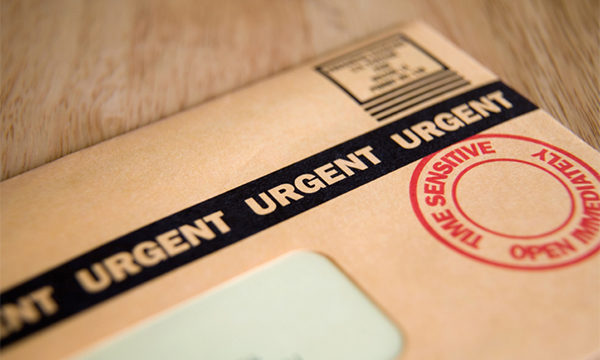I’m going to teach you to raise more money by showing you what to emphasize in your fundraising letters.
Because if you underline or bold the right things, you’ll raise more money.
NOTE: for brevity, I’m going to lump all forms of visual emphasis as “underlining.” You might use underlining, or bolding, or highlighting, doesn’t matter. All of those are different tactics. I’m talking about the strategy of visually emphasizing small portions of your letters and e-appeals.
First, let me tell you why your underlining is so important.
Underlining has two purposes in fundraising writing. Almost nobody knows the second – and more important – purpose.
- Bolding or underlining signals that a sentence is important. This is true of almost any writing.
- But underlining also serves a second, more important purpose. The most effective fundraisers use underlining to choose for your donor which things they are most likely to read.
Because remember, most of your donors won’t read your letter from top to bottom. They will scan your letter – briefly running their eyes down the page. And as they scan, when they see a sentence that has been emphasized, they are likely to stop scanning and read.
It’s this second, more valuable purpose that most organizations don’t know about. So they underline the wrong things.
My Rule of Thumb
Here’s what I try to do. This doesn’t apply to every letter, but I try this approach first on every single letter I review or write:
- The first thing underlined should be a statement of need, or a statement describing the problem that the organization is working on.
- The second thing is a brief explanation of how the donor’s gift will help meet the need or solve the problem mentioned in the first underlined section.
- The third thing is a bold call-to-action for the donor to give a gift to meet the need / solve the problem today.
If you do that, I can basically guarantee that your letter will do well. A MASSIVE number of fundraising letters don’t even have those elements, let alone emphasize them. If you have them, and you emphasize them, here’s what happens:
- Donors know immediately what you’re writing to them about
- Donors know immediately what they can do to help
- Donors know immediately that they are needed!
Because of those things your donors are more likely to read more. And more likely to donate more.
There Are Some Sub-Rules
- No pronouns. Remember that it’s very likely that a person reading the underlined sentence has not read the prior sentences. So if you underline a sentence like “They need it now!” the donor does not know who “they” are and what “it” is. The sentence is basically meaningless to the donor. Their time has been wasted.
- Not too many. You’ve seen this before; there are four sentences that are bolded, five that are underlined, and the result is a visual mess that only a Board member would read. Be disciplined. I try to emphasize only three things per page, sometimes four.
- Emphasize what donors care about, not what your Org cares about. If you find yourself emphasizing a sentence like, “Our programs are the most effective in the county!” … de-emphasize it. Though it matters a lot to you, no donor is scanning your letter looking to hear how good your organization is at its job. But donors are scanning for things they are interested in. So emphasize things like, “Because of matching funds, the impact of your gift doubles!” or “I know you care about unicorns, and the local herd is in real danger.”
- Drama is interesting. If your organization is in a dramatic situation, or the story in the letter has real drama, underline it. Here are a couple of examples from letters we’ve worked on recently: “It was at the moment she saw the ultrasound that life in her belly stopped being a problem and became a baby” and “The enclosed Emergency Funding Program card outlines the emergency fundraising plan I’ve come up with.”

And now, I have to share that I got the idea for this post when I saw this clip from the TV show “Friends”. It turns out that Joey has never known what using ‘air quotes’ means – and he’s using them wrong (to hilarious effect). I saw it and thought, “That’s like a lot of nonprofits trying to use underlining effectively.”
If you’re offended by that, please forgive me. I see hundreds of appeal letters and e-appeals a year. I developed a sense of humor as a defense mechanism. 🙂
The good news is that learning how to use underlining is as easy as learning to use air quotes!
You can do this. Just remember that most of your donors are moving fast. Underline only what they need to know. That’s an incredible gift to a compassionate, generous, busy donor!
And if you’d like to know how Better Fundraising can create your appeals and newsletters (with very effective underlining!) take a look here.
Steven Screen is Co-Founder of The Better Fundraising Company and lead author of its blog. With over 30 years' fundraising experience, he gets energized by helping organizations understand how they can raise more money. He’s a second-generation fundraiser, a past winner of the Direct Mail Package of the Year, and data-driven.









5 comments on “How to Choose What to Underline and Why”